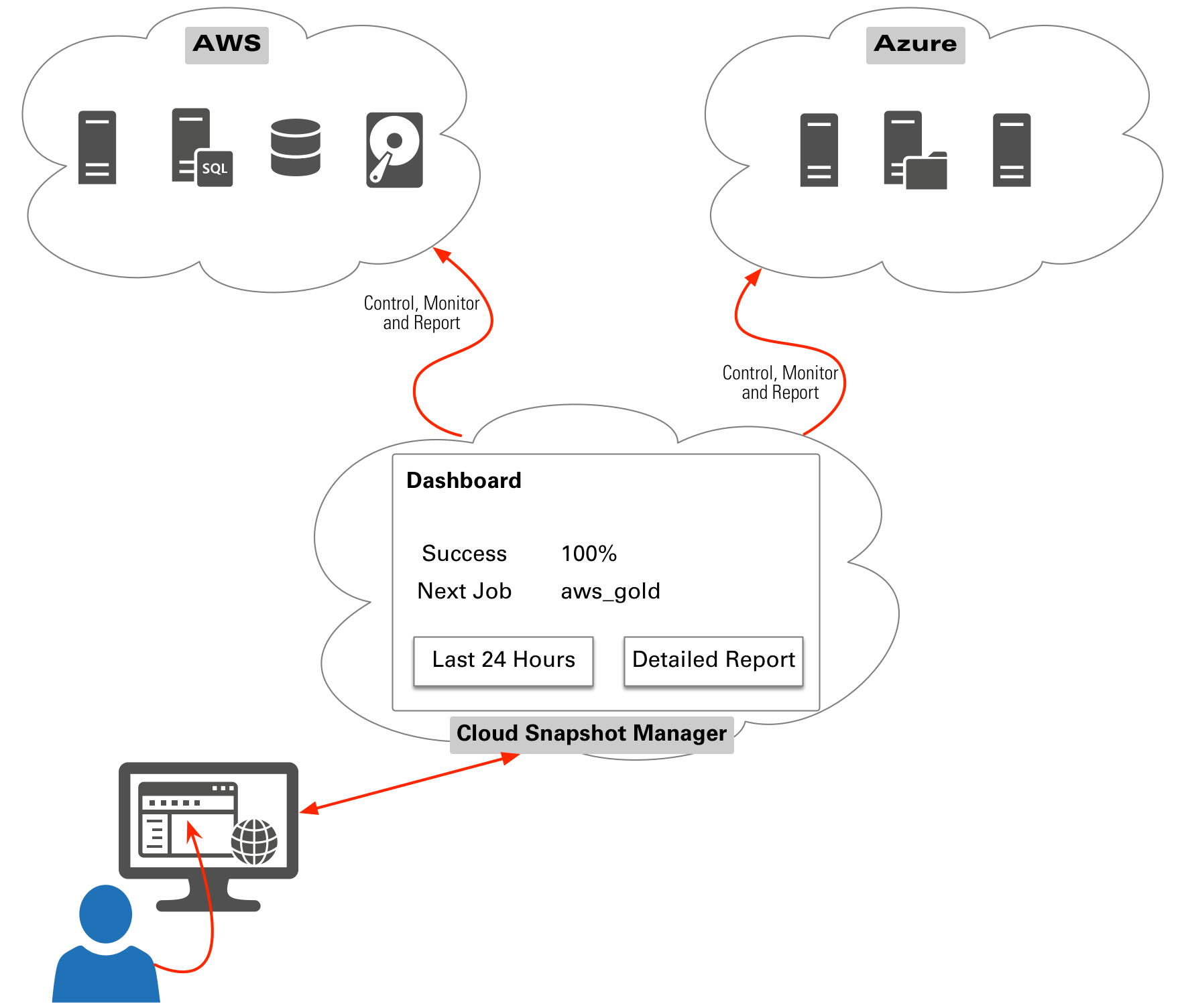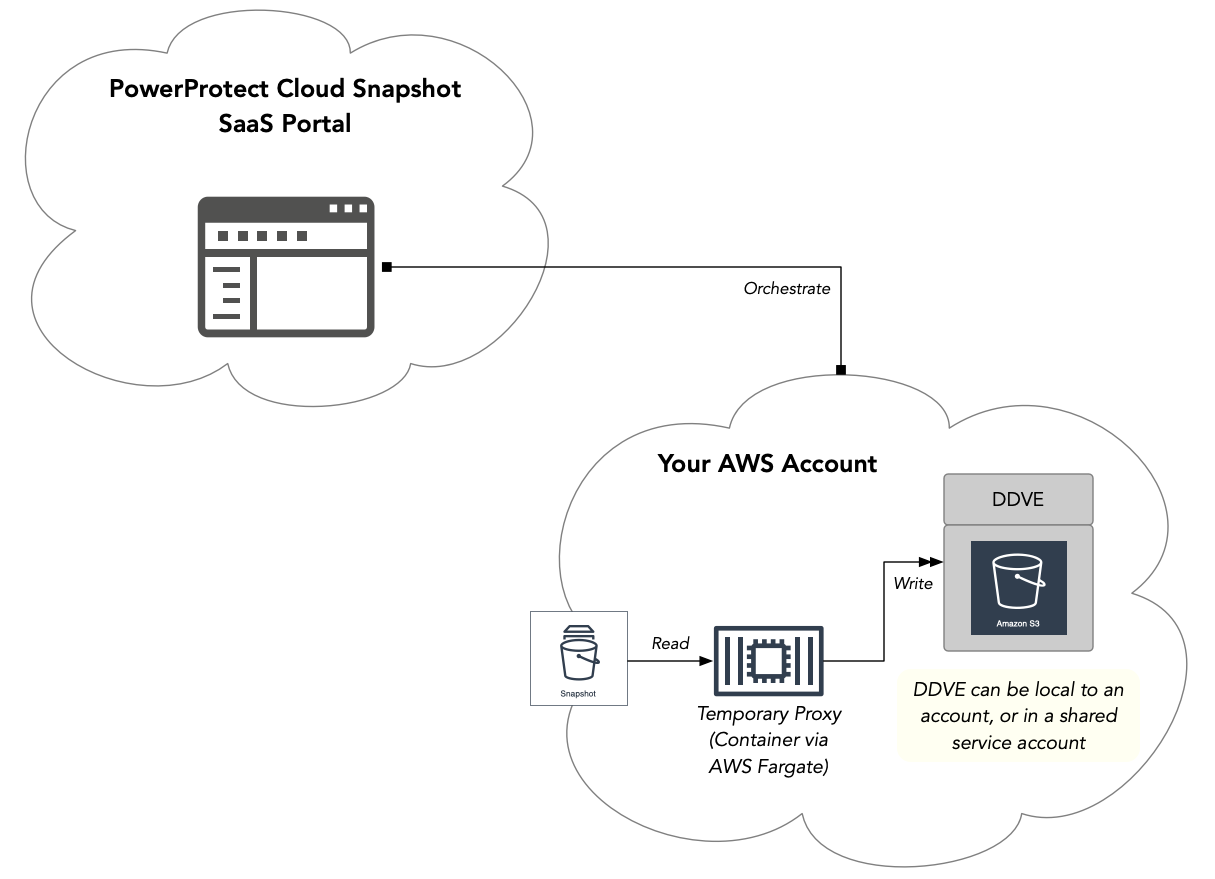I sometimes go into meetings with new customers who think of Dell EMC just as a hardware company. These businesses expect that we don’t want to work with cloud-native data protection techniques. But the reality is that just like a datacentre, many cloud operations have data protection requirements that are best met by a mix of cloud-native and traditional backup/recovery operations. And that’s why I love PowerProtect Cloud Snapshot Manager so much.
Cloud Snapshot Manager is a multi-cloud snapshot management tool via a SaaS portal that enables you to set up proper data protection lifecycle management policies. You can run snapshots for rapid operational recovery of systems and databases, but with the appropriate frequency and retention time, automatically deleting snapshots that are no longer required at the end of their lifecycle.
If you’re working in a cloud environment, this is about freeing up your developers even more – now, they can get their systems protected just by using tags, and you as the IT owner or backup administrator can track how well protected you are.

Why does Cloud Snapshot Manager need Deduplication?
There is a fundamental problem with snapshots, however – they’re not exactly the cheapest storage. While cloud vendor snapshots are stored in some form of object, 1 GB of snapshot storage costs more than 1 GB of premium object storage. So over time, as your snapshot storage consumption builds up, your cloud vendor makes more money, and you get less budget for cloudy endeavours.
This isn’t much of a problem if you’re only keeping cloud-native snapshots for a few days, or maybe even a couple of weeks. But as businesses move more systems of record into the public cloud, keeping all those monthlies required for compliance retention will stack on the dollars to the monthly bill.
The solution, therefore, is to use deduplication storage for longer-term retention. And that’s what’s been introduced with Cloud Snapshot Manager. It’s important to note this isn’t about making Cloud Snapshot Manager some sub-process of Avamar, NetWorker or PowerProtect Data Manager. There’s no traditional backup product that has to get involved here. The entire end-to-end process of rolling over snapshots to PowerProtect DD Virtual Edition (DDVE), then subsequently retrieving them for recoveries, is orchestrated and controlled by Cloud Snapshot Manager.
How the Rollover Process Works

To roll over snapshots into deduplication storage, you’ll need to supply a licensed DDVE to Cloud Snapshot Manager. However, the really cool thing is that you don’t have to worry about the proxies used to perform the rollover. Instead, Cloud Snapshot Manager leverages cloud-native container controls to instantiate a temporary, light-weight container for a proxy when a policy invokes rollover. The proxy reads data from the snapshot storage (direct – it doesn’t have to actually mount the snapshot) and writes it to the supplied Data Domain Virtual Edition. That DDVE can be either local the specific account, or if you’re using a shared services model, a DDVE in another AWS account where appropriate network connectivity is available (e.g., via a transit gateway). Of course, it uses Boost for the write, limiting the amount of data transferred out of the proxy.
What are the Advantages of Snapshot Rollover?
By rolling over the snapshots from traditional snapshot storage into DDVE, you get your snapshots stored with the full benefits of deduplication – across the entire storage pool addressable by the DDVE.
Because that’s a deduplication storage pool, you get the benefits of more efficient – and cheaper! – storage of your longer-term snapshots. Imagine 12 months or 84 months worth of compliance retention, still accessible as a snapshot but written out to DDVE at 10, 15 or 20+:1 deduplication!
The other great thing of course is that while the rollover-to-DDVE process is automated, so too is the recall process. That’s right: when it comes time to do a snapshot recovery from a copy that’s now sitting on DDVE, Cloud Snapshot Manager temporarily instantiates a proxy that reads the data from DDVE and writes it to your snapshot storage.
You also get the option of consolidating. You don’t need one DDVE for snapshot rollover, and another for Avamar, NetWorker, or PowerProtect Data Manager. Instead, if you want to consolidate your deduplication efforts, you can have both standard backups and snapshot rollover going to the same system. You can set limits within Cloud Snapshot Manager to specify the maximum number of write and/or read streams you want it to consume within a DDVE – so, it’s good at sharing!
As always, you can find out more about Cloud Snapshot over at its product support page, or the product overview page. Don’t forget, Cloud Snapshot Manager has a free, 90-day trial, which makes it easy to check out how it will work with your public cloud environment! Finally, if you just want to have a bit of a click-through review of it, you can check out the interactive demo, here.
Don’t forget – if you’re after a comprehensive overview of data protection (procedures, planning, technology and more!), check out the second edition of Data Protection: Ensuring Data Availability.
